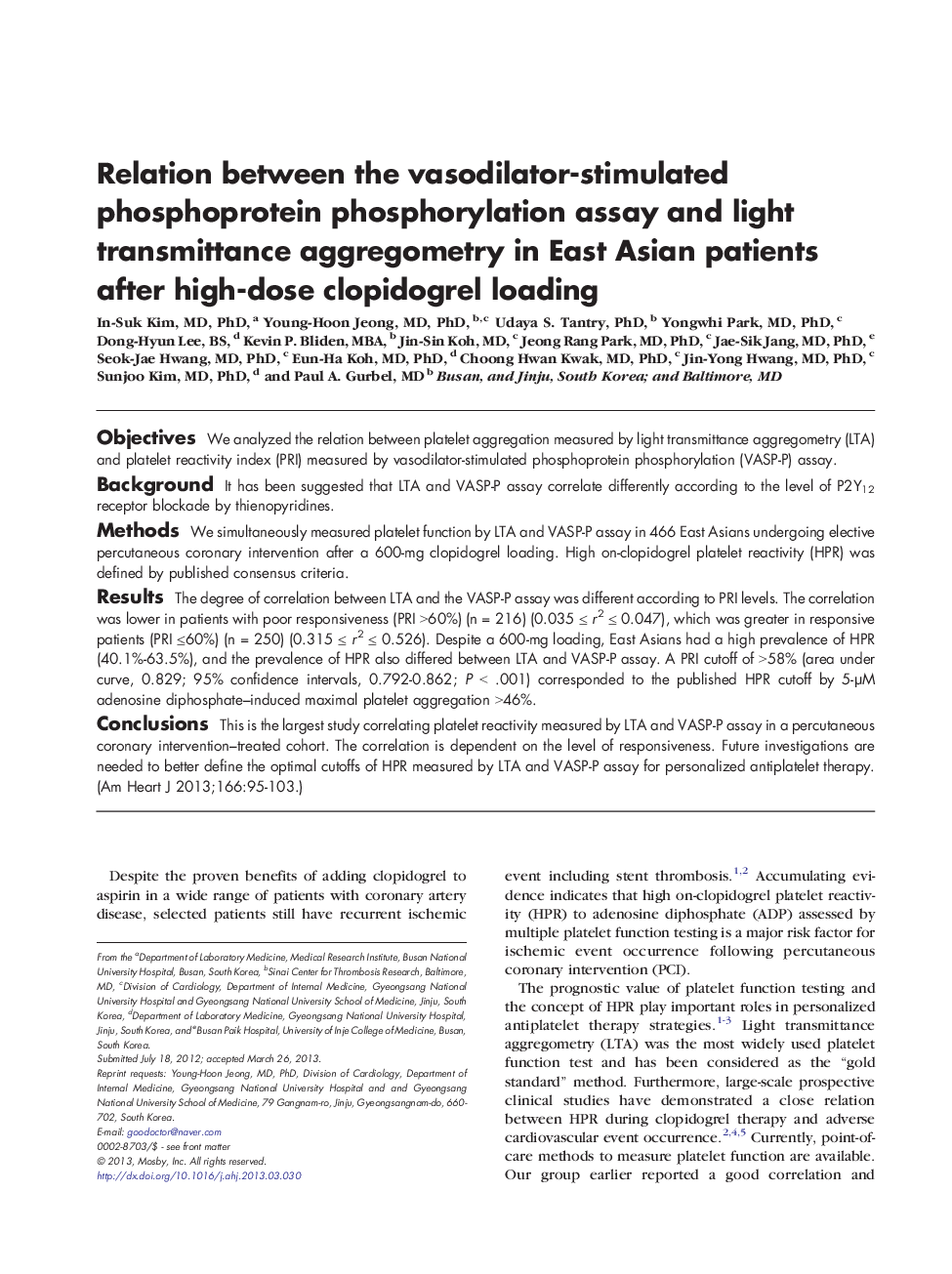| Article ID | Journal | Published Year | Pages | File Type |
|---|---|---|---|---|
| 2848825 | American Heart Journal | 2013 | 9 Pages |
ObjectivesWe analyzed the relation between platelet aggregation measured by light transmittance aggregometry (LTA) and platelet reactivity index (PRI) measured by vasodilator-stimulated phosphoprotein phosphorylation (VASP-P) assay.BackgroundIt has been suggested that LTA and VASP-P assay correlate differently according to the level of P2Y12 receptor blockade by thienopyridines.MethodsWe simultaneously measured platelet function by LTA and VASP-P assay in 466 East Asians undergoing elective percutaneous coronary intervention after a 600-mg clopidogrel loading. High on-clopidogrel platelet reactivity (HPR) was defined by published consensus criteria.ResultsThe degree of correlation between LTA and the VASP-P assay was different according to PRI levels. The correlation was lower in patients with poor responsiveness (PRI >60%) (n = 216) (0.035 ≤ r2 ≤ 0.047), which was greater in responsive patients (PRI ≤60%) (n = 250) (0.315 ≤ r2 ≤ 0.526). Despite a 600-mg loading, East Asians had a high prevalence of HPR (40.1%-63.5%), and the prevalence of HPR also differed between LTA and VASP-P assay. A PRI cutoff of >58% (area under curve, 0.829; 95% confidence intervals, 0.792-0.862; P < .001) corresponded to the published HPR cutoff by 5-μM adenosine diphosphate–induced maximal platelet aggregation >46%.ConclusionsThis is the largest study correlating platelet reactivity measured by LTA and VASP-P assay in a percutaneous coronary intervention–treated cohort. The correlation is dependent on the level of responsiveness. Future investigations are needed to better define the optimal cutoffs of HPR measured by LTA and VASP-P assay for personalized antiplatelet therapy.
